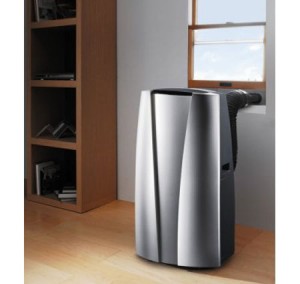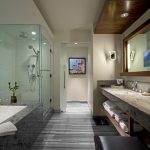With record-breaking heat waves in many areas of the world this summer, portable air conditioners may provide welcome relief. Portable air conditioners are usually bulky items that fit into typical windows. These heavy cooling units are difficult to lift, let alone install into a high window. However, installation of these air-conditioners should not be a monumental task to perform. In fact, proper placement and successful installation should take around 15 minutes for the average person to accomplish. The biggest challenge is assuring that the exhaust tube and the air intake portions of the unit are utilized properly. This would be the heaviest part of the air conditioner, and they will is usually made of metal. The proper placement of the exhaust and ventilation ports includes choosing a window that is exposed to a continuous source of fresh air.
One of the drawbacks to owning a portable air conditioning unit is that it can only cool a small area. This means that typical window air conditioners cool only the room in which they are installed. For consumers wishing to cool an entire home, a central air conditioning unit would be needed. These are pricey investments that warrant a bit of shopping and good research. The output of all air conditioners including portable units is measured in British Thermal Units, or BTUs. The higher the BTU, the more cooling output potential the unit is capable of producing. For example a 7000 BTU air conditioner will cool a room that is approximately 250 square feet in size. A larger 12,000 BTU portable air conditioner can cool a room that is around 500 square feet. All air-conditioners contain a specified BTU rating. This rating is generally located on the boxes of most portable units, or in the brochures that can often be found at the point-of-sale.
Most portable air conditioners can be installed easily by following a few simple guidelines. The unit should be carefully unpacked from the box. Making sure that all of the parts are available prior to beginning the installation process, can assure success. If the manufacturer has excluded parts listed in the owner’s manual, then the air conditioner should be returned to the store in which it was purchased. It is also a good idea to obtain information about any manufacturer’s warranties that might be available. Many stores offer extended service plans for many of the products that they sell. However, these plans can prove to be expensive additions to the product itself. Careful consideration should be practiced when selecting an air conditioning unit and service plan.
Installing the portable air conditioner should not be complicated. Selecting the proper window to match the size the unit is usually the most challenging aspect. Assuring that the warm air exhaust ports are vented to the outside of the structure is essential. These are usually a set of hoses that project the warm air from the room inside. The outside air is brought into the air conditioner through a series of metal vents that sit outside at the rear of the unit itself. While the unit is running, continuous fresh air is routed into the vents, cooled and blown into the room through a fan mounted on the inside of the unit. Most portable air-conditioners contain a molding that seals the window from the elements. Once the air-conditioner is properly installed and secured by following the owner’s manual and installation directions all that is left is plugging it in and turning it on to the desired settings.
Portable air conditioners can be an asset to those seeking to escape from the hot temperatures of summer. Proper care and maintenance should be practiced. Information detailing the best methods for maintaining them in good working order should be contained in the owner’s manual as well. Over the past decade, portable air conditioners have become much more durable, lighter weight and more energy efficient. Innovations in home cooling will continue to improve. Purchasing a portable unit can also be economical with a bit of research and shopping around.

















